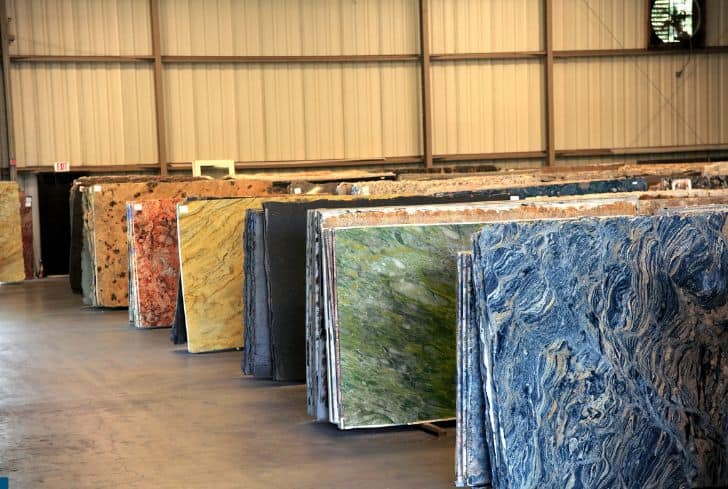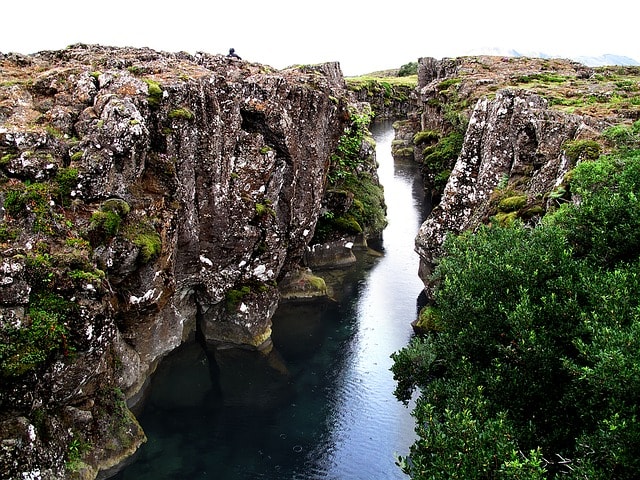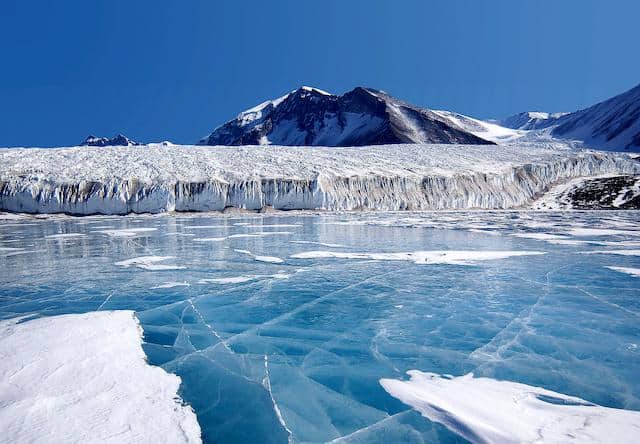Does Granite Absorb Water? (And Heat?)

Granite is a common, coarse-grained or medium-grained natural stone. This hard igneous rock is strong, solid, and rich in quartz, orthoclase, microcline, mica and feldspar. The speckles of quartz in the stone give a dash of classy sparkle.
Granite is the most common plutonic rock of the Earth’s crust, formed by the cooling of magma (silicate melt) at depth. The process of developing granite stone is time-consuming and requires high pressure. Nevertheless, it is available in honed and matte slabs, brushed and shiny tiles. Nowadays, it can be used in any part of your house.
In this article, we will learn about granite and its various characteristics that will help us understand how to take care of granite.
Does Water Penetrate Granite?
Yes, water penetrates granite. Natural stones like marble and granite countertops have varying porosity, which will absorb water. Natural stones contain a network of tiny interconnected channels similar to the capillaries of the human body, which permit penetration by liquids and gasses. These channels act like a sponge, absorbing liquids over time.
However, the amount of absorbency varies depending on the variety of stones. For example, granite, a denser igneous rock, absorbs less liquid than its metamorphic counterpart, marble.
However, prolonged contact with moisture can affect any surface. For example, if a puddle of water is left on the counter for a long time, a dark spot may appear when the water is wiped away. Also, highly acidic substances like orange juice, coffee, and wine leave a dull mark on some marble and Granite, especially of lighter color.
How Much Water Can Granite Absorb?
Water absorption matters in natural stone products. Absorption levels determine the capacity of a specific type of stone to withstand weathering and structural stress and also its usage. The qualities of a stone must match the needs of the application for lasting effect. In addition, absorption in rock is a measure of a stone’s porosity to determine the durability of a particular installation and a stone’s stain resistance.
The absorption capacity of every type of granite is determined by calculating the difference between the fully dry and fully saturated weights. The resulting value is expressed as a percentage required to determine whether a type of stone is appropriate for a specific application. Apart from the testing methods, natural stone products must adhere to the ASTM specifications.
Absorption capacity in Granite usually ranges from .8 to .01 percent, and the standard requirement for water absorption in Granite is .4 percent. It’s important to note that the absorption capacity of every stone of different dimensions is a range rather than one number.
What Happens When Granite Gets Wet?
If you have installed granite countertops, you might notice that granite changes color when it gets wet. This is because all stones are different, and some are more likely to darken upon contact with liquids than others.
Granite is a natural substance, and you find granite extremely smooth to the touch, but on a microscopic level, it is uneven and full of holes. As this porous surface of the stone allows water to cling to it and absorb, a darkening appearance is noticed.
Usually, when liquids are spilled on the countertop, they evaporate within half an hour. Therefore, even if you have very porous Granite, spilling water or oil will not damage your counter permanently. But it may stain when a colored liquid, like soy sauce, wine, or coffee, is spilled and allowed to sit for more than twenty minutes on the stone.
Preventing staining requires sealing your Granite. Most fabricators apply a sealer to granite countertops before installation that protects the stone from absorbing liquids too quickly.
Is Granite Water-resistant?
One of the reasons for choosing granite as counters is because granite is famous for its natural ability to resist moisture. It has a natural water resistance that helps protect it.
The Paradox of Granite Countertops: granite is water-resistant; however, it is porous. It isn’t waterproof. Because Granite is a stone, it is naturally porous. Although it won’t absorb like sandstone or limestone, it will still absorb bits of moisture, eventually damaging your counters.
When granite countertops are installed, they should also be sealed. This resin and petroleum-based sealer help fill those tiny holes in the granite countertop that can let in moisture. Therefore liquid beads up instead of soaking into the surface and staining granite.
The best solution is to keep it clean and wipe up whatever spilled quickly. Water spills usually evaporate before they can cause damage. Still, a few liquids such as oils and acidic beverages, like lemon juice, coffee, and alcohol, should be wiped off immediately.
These liquids have nothing to do with the water-resistance of your counters. All these liquids can cause “etching” and can corrode the surface of counters, no matter how well they are sealed.
Does Granite Absorb Heat?
Granites are one of the most heat-resistant countertops available in the market. Hot pans can be put directly on the countertop’s surface from the oven because granite countertops will not melt or blister when exposed to heat. However, experts recommend using a trivet while using appliances such as Crockpots that emit heat for a long time.
Can Granite be Used for Flooring?
Granite can definitely be used as flooring. The granite looks classy and gorgeous, and granite flooring creates a rich environment. Its beauty surpasses most other tile materials. It is a natural stone product, thus Eco-friendly.
It is not too porous like marble, and sealing is not essential when used in a moisture-proof area. It is comparatively harder and stains-resistant than any other flooring material. It will make any area of your house spectacular and attractive.
Granite is available in smooth, high luster formats and matte, muted, and rustic textures. The speckles of quartz provide a dash of classy sparkle. There is a wide range of hues, from rich dark variety to gold, cream white, and many other earthy and stunning colors.
No two slabs of granite flooring are alike; there are possibilities for making varied and exciting patterns. Either you can create unique designs or stick with a minimal, monochromatic appearance for a more modern house interior. Granite floor tile is now also in trend because it is suitable anywhere.
Granite is a little expensive and weighty. Therefore, it requires experts for installation. The things needed while installing granite flooring are granite floor tile, plastic spacers, backer-board, screws, wet saw, notched trowel, rubber mallet, grout float and sponge, penetrating grout sealer, and paper towel.
The shiny look is attractive but remember, granite can become very slippery when wet. So it might be riskier for young children or elderly people. Granite can also be cold underfoot, ideal for warmer climates but don’t ignore your slippers if you live anywhere cold.
For many, its price range is one of the main backdrops of granite because granite flooring is not for penny pinchers. Instead, granite is a lavish flooring material, and its price range clearly reflects this.
Can Granite be Painted?
Yes, you can paint granite countertops, backsplashes, fireplace, coffee bars, surrounds, and more with the proper primer, paint, and sealer to spruce up any room in your house, including bathrooms and kitchens.
Paint is a much less expensive option and provides the results you are attempting to achieve, but it can be challenging. First, you must be prepared for your painting project ahead of time because there will be some planning and work to complete the job well and correctly. Then, after deciding on the look you want to achieve, you need to do your homework to understand the tools and products you will need.
These are some questions you need to ask yourself before starting your granite painting project. For example, do you want a marble look, or will you stay with a granite look but use a different color scheme? What is the size of your bathroom or kitchen? Will a solid color suit better with the room decor?
You can paint your granite countertops if you accept a bit of risk. But it’s important to understand that this will require meticulous work.
Can Baking Soda Damage Granite?
Baking soda is a wonder ingredient that is extremely useful for removing stains from Granite without damaging the surface. You don’t need to use harsh and abrasive chemicals for that. Instead, mix baking soda with water to make a paste for cleaning oil-based stains and make a paste by mixing with hydrogen peroxide for cleaning water-based stains.
A tiny portion of each ingredient takes care of most stains. Apply this baking soda paste and clean it up using the mild dish soap and water solution we recommend for cleaning Granite. If the stain is resistant, apply the solution and cover it with a piece of plastic wrap.
Leave it for 1-2 days with its edges taped down. After 24-48 hours, remove the plastic, and you will likely find a clean and stain-free surface underneath. Remove if any excess paste is left by cleaning the granite surface.






